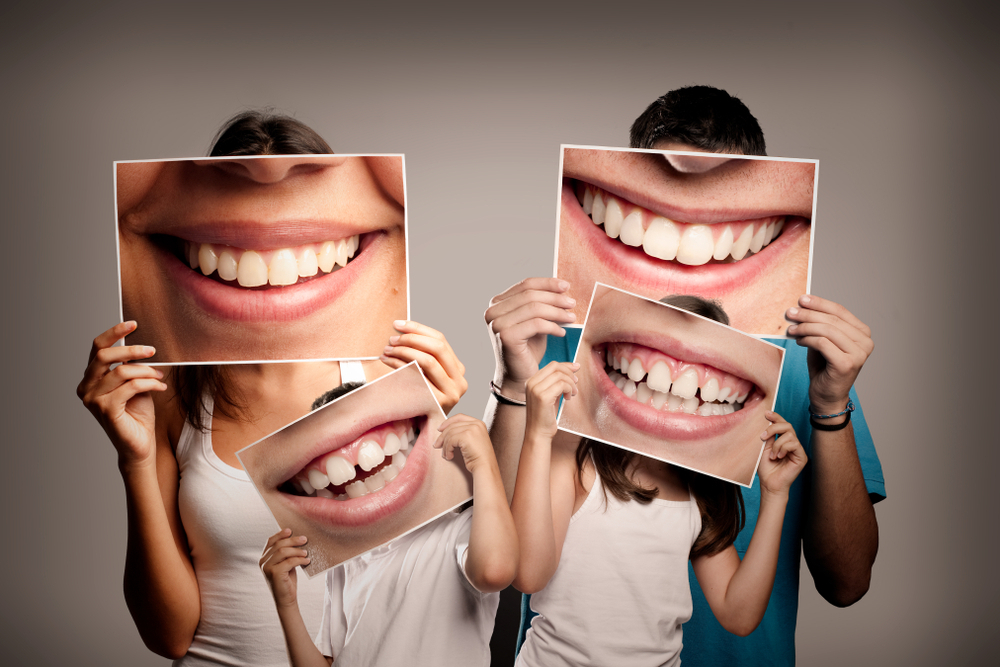Some Known Incorrect Statements About Legacy Orthodontics
Some Known Incorrect Statements About Legacy Orthodontics
Blog Article
The Main Principles Of Legacy Orthodontics
Table of ContentsLegacy Orthodontics Things To Know Before You BuyOur Legacy Orthodontics StatementsMore About Legacy OrthodonticsLittle Known Facts About Legacy Orthodontics.Facts About Legacy Orthodontics Revealed
In enhancement, we offer flexible treatment schedules, versatile repayment alternatives and a fun, enjoyable experience.An orthodontist is a dentist educated to diagnose, stop, and treat teeth and jaw irregularities. They remedy existing problems and are trained to recognize problems that might establish in the future. Orthodontists deal with people of every ages, from kids to grownups. People often link a perfect smile with health.
Malocclusion, or misaligned teeth, can lead to dental concerns, consisting of tooth degeneration, periodontal illness, and difficult or uncomfortable eating. But not every person is born with straight teeth. If you have a poor bite or big spaces in between your teeth, you might wish to consult a dental practitioner specializing in orthodontic care.
The 8-Minute Rule for Legacy Orthodontics
( Picture Credit: DigitalVision/Getty Images) Orthodontists utilize repaired and removable oral tools, like braces, retainers, and bands, to alter the setting of teeth in your mouth. Orthodontic therapy is for oral abnormalities, including: Jagged teethBite issues, like an overbite or an underbiteCrowded teeth or teeth that are too much apartJaw misalignmentThe goal of orthodontic treatment is to boost your bite.
A healthy and balanced bite guarantees you can consume, eat, and speak effectively. While you may think about orthodontists as primarily for youngsters or teenagers who require braces, they can deal with dental issues at any kind of age. Orthodontists go to university, oral college, and orthodontic school. After college graduation, they spend 2 or 3 years in an orthodontic residency program.
, but not all dental practitioners are orthodontists. They concentrate on two areas: How to correctly and safely move teeth Exactly how to effectively guide advancement in the teeth, jaw, and faceOnce an orthodontist has actually finished training, they have the choice to end up being board certified.
Unknown Facts About Legacy Orthodontics
Imbalance, or malocclusion, is the most usual reason individuals see an orthodontist. It is genetic and is the result of size differences between the top and lower jaw or between the jaw and teeth. Malocclusion causes tooth congestion, a misshapen jaw, or irregular bite patterns. Malocclusion is usually treated with: Your orthodontist affixes steel, ceramic, or plastic square bonds to your teeth.
If you have only minor malocclusion, you might have the ability to utilize clear braces, called aligners, as opposed to standard dental braces (https://www.pubpub.org/user/brian-mccune). Some people require a headwear to help move teeth into line with stress from outside the mouth. After braces or aligners, you'll need to put on a retainer. A retainer is a custom gadget that keeps your teeth in area.
They're frequently utilized on children. They can produce extra room in the mouth without having to pull teeth. If you have a significant underbite or overbite, you might require orthognathic surgical treatment (likewise called orthodontic surgical treatment) to lengthen or reduce your jaw. Orthodontists make use of wires, surgical screws, or plates to sustain your jaw bone.
You might require to see an orthodontist if you have: Crowding or not sufficient area for every one of your teethOverbite, when your top teeth come over your base teethUnderbite, when your base teeth are too much forwardSpacing or investigate this site issues with gapsCrossbite, which is when your top teeth fit behind your bottom teeth when your mouth is closedOpen bite or a vertical space in between your front bottom and top teethMisplaced midline, when the center of your base and upper teeth don't line up Fixing an oral malocclusion can: Make attacking, eating, and talking easierImprove the balance of our face and your general appearanceEase discomfort from temporomandibular joint disordersDifferent your teeth and make them less complicated to cleanse, aiding prevent dental caries or dental caries It's commonly a dental practitioner that initially notices misaligned teeth during a regular test.
Getting My Legacy Orthodontics To Work

During your initial orthodontic assessment, you'll likely have: A dental examPhotos taken of your face and smileDental X-raysPanoramic (360 level) X-rays of your face and headImpressions to develop mold and mildews of your teethThese tests will certainly help your orthodontist recognize exactly how to proceed with your treatment. clear braces. An orthodontist is a dental professional who's had training to treat your teeth and jaw
Orthodontists may carry out surgical treatment, exams,X-rays,and even more to aid you obtain a much more comfortable, much healthier smile. An orthodontist is concentrated on your bite, so something like a cracked tooth would certainly be handled by a dental practitioner. Orthodontists are dental professionals yet not all dental experts are orthodontists. Orthodontists are concentrated on your bite, or the means your teeth meshed, and the straightness of your teeth.
Ever before questioned how celebs constantly seem to have flawlessly straightened teeth? The response often hinges on the competent hands of an orthodontist. But exactly what does an orthodontist do? Orthodontists are oral experts that focus on dealing with abnormalities in the teeth and jaws. Their proficiency surpasses just producing a gorgeous smile; it reaches boosting your general dental health and wellness and feature.
7 Simple Techniques For Legacy Orthodontics

, orthodontists have a diverse toolkit at their disposal. These reliable dental braces make use of a system of braces bound to the teeth and attached by wires.
Clear aligners, like Invisalign, are a preferred choice for individuals seeking a more discreet therapy option. These detachable trays are custom-made to considerably shift the teeth's placement. Headgear might be utilized in combination with braces or aligners to apply extra targeted forces, especially for fixing jaw disparities. In instances of narrow jaws, palatal expanders can be used to develop room for proper tooth placement.
Report this page